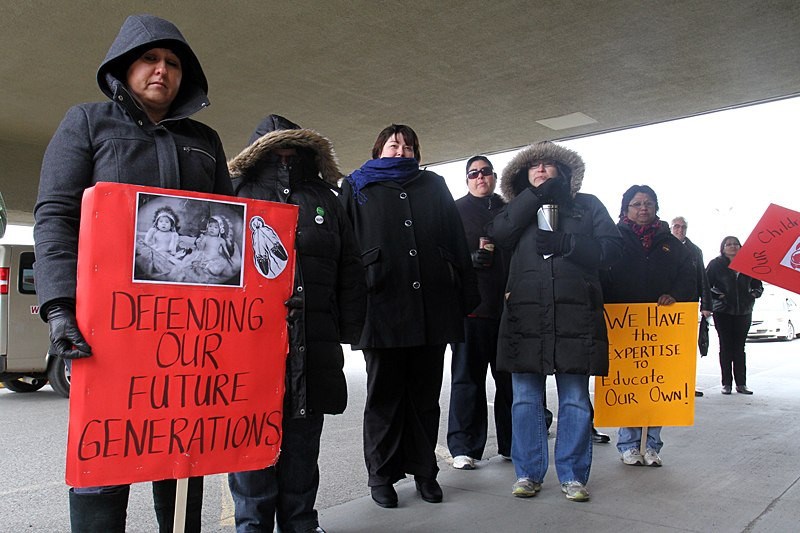Protesters say First Nations are facing an onslaught of legislative attacks by the federal government.
About 50 protesters voiced opposition to the federal government’s handling of First Nation education at a rally held at the Victoria Inn Thursday. Grand Chief Gordon Peters of the Association of Iroquois and Allied Indians and Ontario Region Chief Stan Beardy of Assembly of First Nations were among those who attended.
Representatives of Aboriginal Affairs and Northern Development were in the city to hold consultation sessions on the drafting of a new piece of legislation that’s intended to improve First Nation education.
Peters, who also holds the education portfolio for the Ontario region, said they want negotiations and not consultations.
“We’re in a massive legislative attack right now on everything from the environment to education,” Peters said.
“In modern day we’ve never seen anything like this and we feel it’s in preparation from the federal government to disempower us. Consultation doesn’t do anything because consultation in the past have fallen on deaf ears.”
The proposed First Nation Education Act states that First Nations would have a choice of how to operate their schools within their community.
Those communities could establish or join a First Nation Education Authority, continue to act independently or enter into an agreement with a provincial school board.
The act also states that mandatory standards would be set similar to provincial standards. This would include mandatory attendance and annual inspections of schools.
When the idea came that the federal government wanted to do a join educational review, Peters said they were supportive but found it wasn’t going to benefit First Nations.
“First of all it is a statutory obligation that they are talking about for six to 16 years old,” he said. “The second thing is (Aboriginal Affairs) has no professional capacity in education. Their historical record on education has been proven. Graduation success rates in our community between 33 to 35 per cent. Their method doesn’t work. We want them to come into a joint partnership to work with us.”
On average, the federal government invests more than a billion dollars per year towards First Nation education.
Peters explained that First Nations actually receive less than provincial governments do on a per child basis usually with a difference between $2,000 to $10,000.
He said they are in dire need for funding as some schools are falling apart. Without that investment to improve the infrastructure, there’s no point in creating a curriculum, he said.
Earlier this week the federal and provincial governments signed a declaration of understanding with Nishnawbe Aski Nation, which would give communities a larger say in schooling.
The memo commits all parties to improve education for First Nation students.
Beardy, a former Grand Chief of NAN, said they have to explore all opportunities because First Nation youth are so far behind Ontario youth.
“I think it’s important that we get our message out there,” he said. “A lot of our students can’t go to school because they lack the funding necessary for them to attend post-secondary schools or have the opportunity to learn like everyone else.”
Beardy added many students are on a waiting list to receive education. He voiced frustration about the level of funding First Nation communities receive and of the proposed legislation that doesn’t allow for meaningful input.
Aboriginals have one of the fastest growing population in Canada and combined with the increased cost of living, Beardy believes there’s not enough funding available to educate students properly.
Tbnewswatch.com attempted to speak to a representative of Aboriginal Affairs but they declined to comment.
